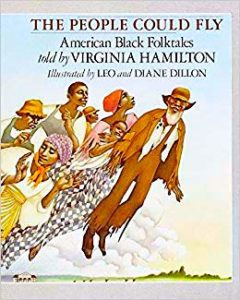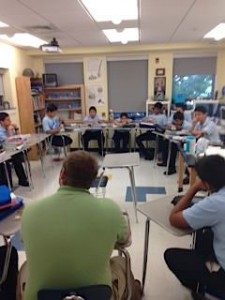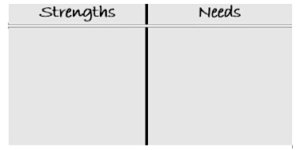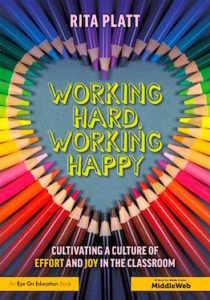Let’s Talk! How to Stage Good Class Discussions
A MiddleWeb Blog

When I was working on earning National Board Certification, I spent many hours designing a method for facilitating literature-based discussions. Below, I share with you the method that worked best for me after some trials and tweaks – the kind we all do when we’re trying something new.
Step 1: Focus on an Issue!
Decide on a theme, issue or topic to discuss and develop an essential question to go with it. It is probably best to start with either slightly controversial topics or broad themes that appeal to the age group you teach.

For example, when I taught 7th grade, I used the theme of justice because my students were very keyed into concepts of what they perceived to be “fair,” and I knew I could use it as a way to dovetail instruction with a social studies unit on slavery in the United States before the Civil War. I developed the following focusing or ‘discussion’ questions:
- What does it mean to be fair?
- Is fair always equal?
- Who determines what is fair or not fair?
Another time, I used the topic of animal rights with a 4th grade group. This was a topic of keen interest to my students after they read The One and Only Ivan by Katherine Applegate. The focus questions were:
- Do animals have rights?
- Should those rights be different than those enjoyed by human beings?
Step 2: Read!
Choose the texts that students will read to learn about the topic and explore differing perspectives. In the best-case-scenario, students would read a variety of texts in a number of formats all surrounding the discussion topics and questions.

Having these “anchor texts” was helpful. We all read the short folk tale, The People Could Fly by Virginia Hamilton. And we also analyzed the poem, Emancipation, by Emily Dickinson (challenging but revealing with teacher support).
After we finished the whole-class reading, we moved into what I call the “individualized yet altogether” readings. These consisted of various texts that students read by themselves, with partners, or in small groups. While these novels, articles, poems, and stories all shared the theme of freedom, the students could choose which to read and they were at a wide variety of independent reading levels.
Step 3: Think and Write!
Help students prepare to discuss by allowing them a class period to organize their thoughts and plan. To scaffold students, I gave each a list of questions to answer in writing. Students used all of the texts they had read to ponder the questions (below) and write answers to them. I was very specific that answers must include direct textual evidence, including page numbers and quotes, so that during the discussion students would be able to easily refer back to the texts.
- What does it mean to be free?
- Is freedom more of a body-thing or a mind-thing?
- Are people free in the modern world?
- Do you think you are free?
- What text spoke most strongly to the theme?
For this step, I found that having a quiet room was important. This is not meant to be a discussion time; it is meant as a time for students to think deeply on their own and prepare to contribute to an intellectual conversation.
Step 4: Set the Stage!

- Set up a video recorder with audio. Recording the discussion and showing it to students later is a part of the learning process.
- Structure the room in such a way that all students can see each other – a circle of desks is best if you can manage it.
- Ask students to put their texts on their desks along with the answers to the questions they wrote in the previous class period(s).
Additionally, I reminded students that there are no wrong answers in a discussion and that they would be learning a lot from the experience that would help them to gain the skills needed for quality discussions in the future.
Step 5: Discuss!
Start the discussion by asking your focusing question. In my case that question was, “What does it mean to be free?”
Here is where it can get tough for a teacher:
DON’T TALK!
Let the students talk. The point is for them to develop independent discussion skills, right? The teacher’s role is to guide that learning.
That was hard for me to be sure! But I practiced self-control and stayed quiet. As students talked, I charted their participation. This was as simple as tallying the number of times each student spoke. There were some uncomfortable silences. There were some rude interruptions. There were some students who talked too much and others who never talked at all. The conversation even fled from the topic from time-to-time. Those things might happen in your class discussion too.
But, don’t worry! It’s okay. Here’s why…
Step 6: Reflect and Plan!

When the video was over, students shared their thoughts first in pairs and then as a whole class. Then, each wrote personal goals for their participation in the next discussion.
Some goals my students wrote were:
- “I will talk at least three times.”
- “I will try hard to include someone who isn’t talking.”
- “I use/refer to the page of the text I am talking about.”
- “I will try not to interrupt.”
I used the data from the video and my tally marks to develop mini lessons on skills I knew my students needed. For example, I taught students how to be assertive and polite when “jumping in” to share a thought. I also taught them to use sentence stems such as the following.
- I agree with ____________ because…
- Respectfully, I disagree with ____________ because…
- I’d like to piggyback on that point…
- The evidence from the text shows…
Step 7: Do it Again!
Repeat! Try the entire process again and remind students of their goals. My students grew to find the discussion to be not only valuable to their learning but also fun! I generally facilitated one per quarter in my junior high classroom.
Step 8: Troubleshooting!
After you have a whole-class conversation under your belt, you will likely need to do some direct instruction with students on some of the needs you noted.
Common problems with discussions include:
- No one talked.
- Some were off topic.
- Interruptions.
- Students didn’t go deep enough.
- There was not a real conversation, it was more like kids making a series of comments.
- Some kids talked too much or not enough.
Don’t let these things discourage you! Learning is a process. Each time students discuss, it will get better and more fluent.
Below are resources that can help you troubleshoot!
Todd Finley offers a critique of discussions as they often are and a how-to for making them better.
The Big List of Class Discussion Strategies by Jennifer Gonzalez shares discussion strategies different than those offered above. Use them to build your down process.
Jeff Zwiers offers a treasure trove of resources and scaffolds for teaching students to use the academic language needed for strong class conversations.
These resources from Erik Palmer right here at MiddleWeb.
Larry Ferlazzo’s post on Effective Classroom Discussions will likely prove helpful as well.

Many teachers know about CommonLit and its large collection of free high-quality readings. Look there for some topic ideas, too – like this resource on cloning the Woolly Mammoth!
Last, in another Heart of the School post I share strategies for discussing civil protest with middle grades students. That post offers another good example of discussions in action.
Just Do It!
Facilitating a whole class discussion can be intimidating. I would be thrilled if any brave souls tried my method and let me know how it went! Come on! Accept the challenge! After your discussion tell us what you learned in the comments!




































Rita,
Thanks for sharing with this me via PDI. This is an excellent article. I love your teaching style. I always need that reminder not to talk to much. I think this is such an important skill to invest a lot of class time in….so often I skip the goal setting and reflection piece. Love it and keep up the great work!
Shannon
As we are wrapping up remote schooling, this is what I miss the most: The learning and feedback the students gain from each other. This is great food for thought and motivates me to incorporate more disussion when we return to the classroom.
Me too!